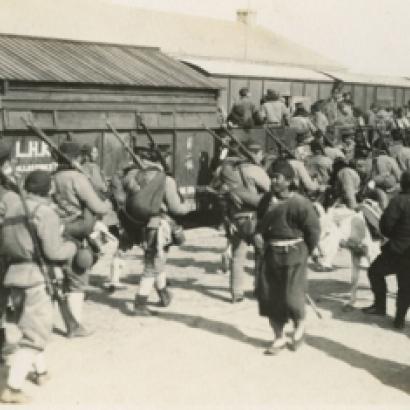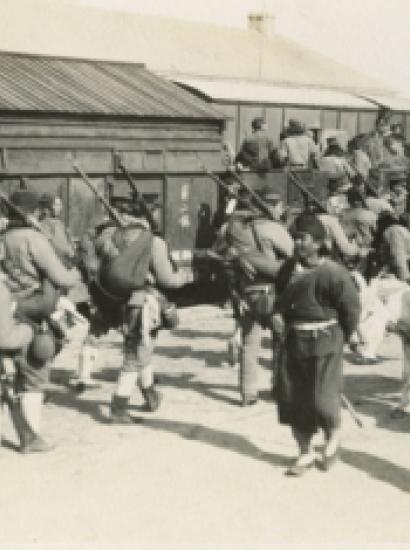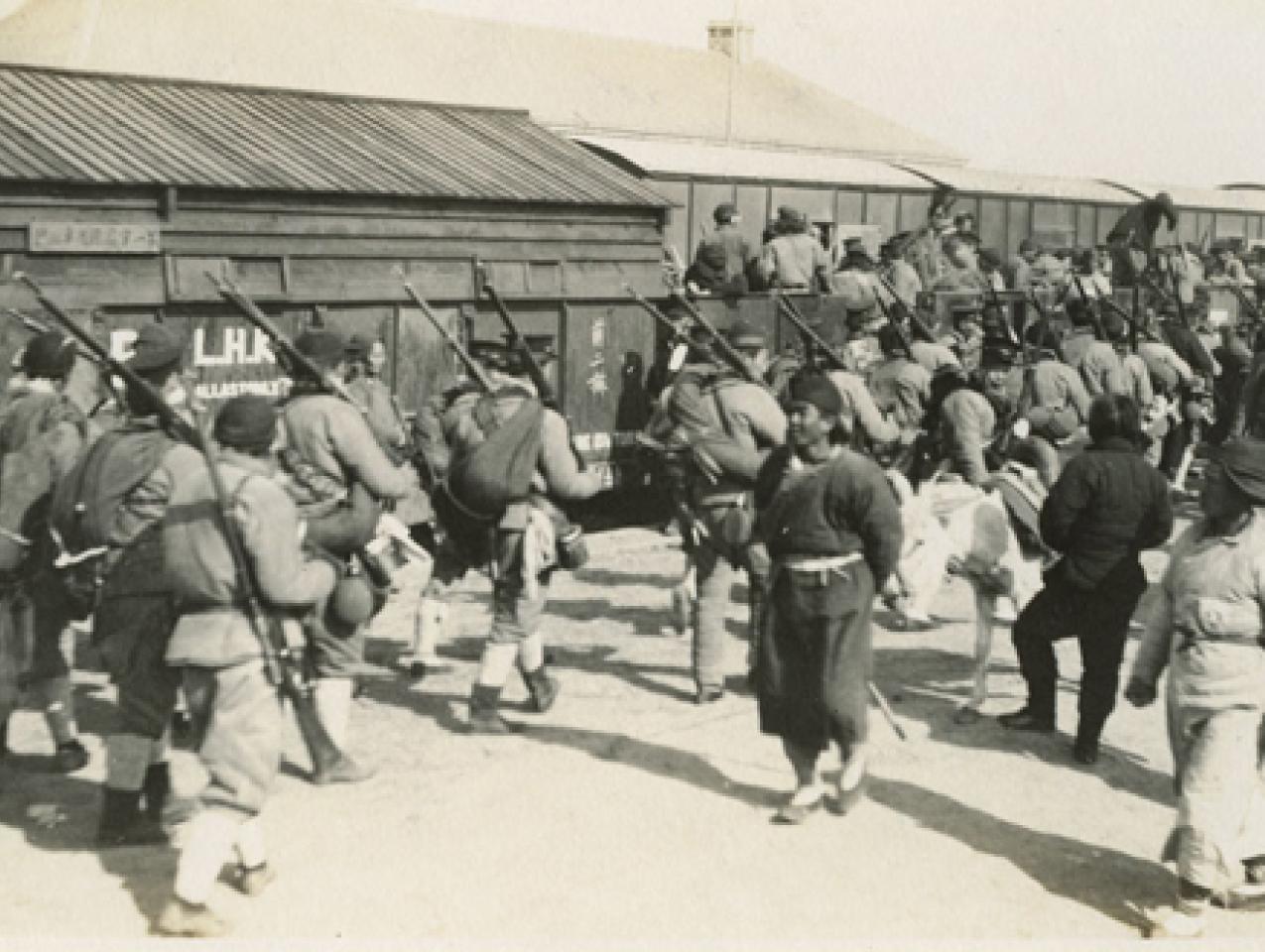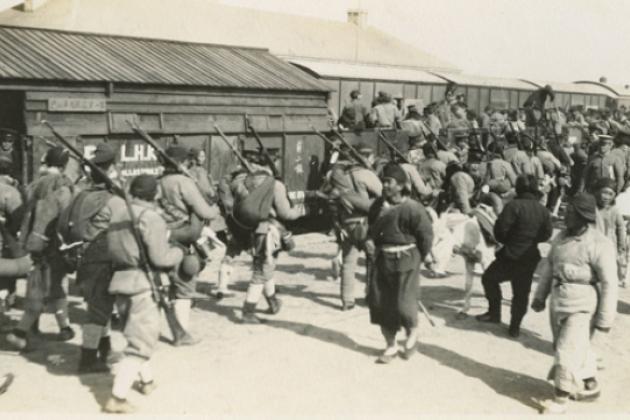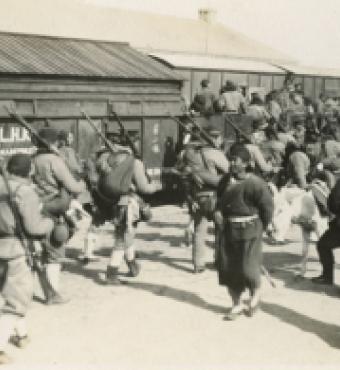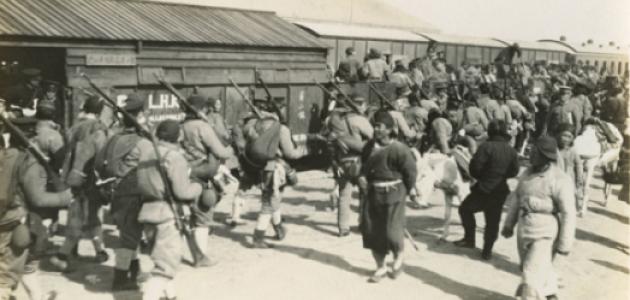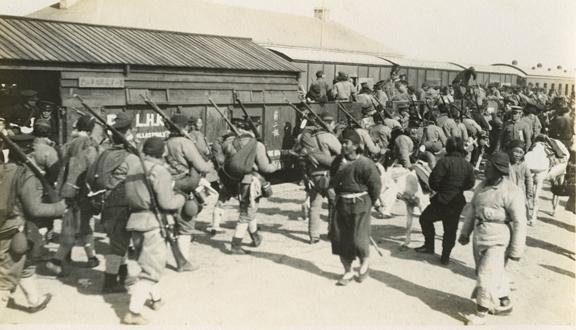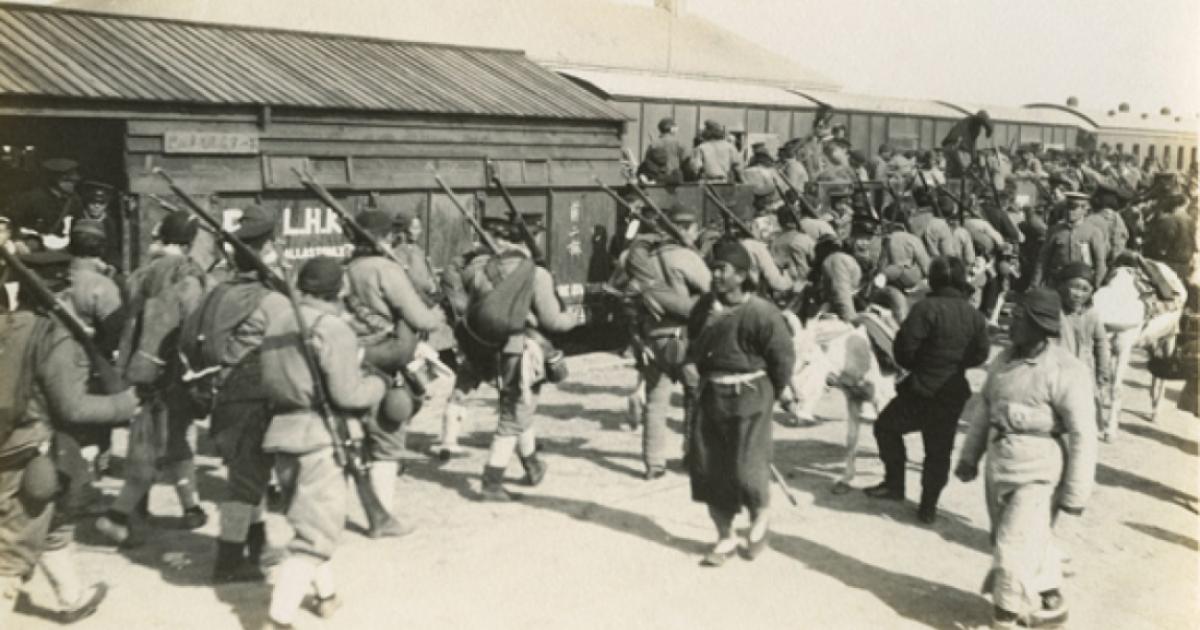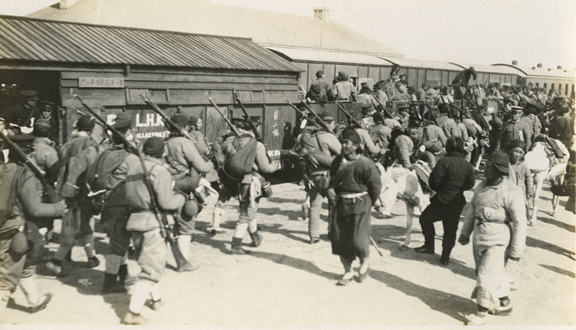
“A Century of Change: China 1911–2011,” the Hoover Institution's current exhibit, will be open extended hours from 11:00 am to 4:00 pm on Monday, October 10, 2011—the centennial anniversary of the Chinese Revolution of 1911.
Newly added materials to the exhibit include a series of black-and-white photographs taken by James B. Webster (1879–1929), a US missionary and educator based in Shanghai from 1908 to 1929, that depict revolutionary troops attacking Qing Imperial forces. Webster, who also served as a Red Cross relief worker, had access to the battlefront on land and in sea. In his December 1911 diary, he observed, “One cannot go about among the Revolutionist troops without being impressed with their orderliness, good behavior and apparent seriousness of purpose. . . . Whatever one thinks about the comparative desirability of a republic or a constitutional monarchy for China as the outcome of this upheaval, one can converse with the soldiers is not long in finding [sic] what they think they want, and it is not going to be an easy task for Yuan Shih Kai to get those notions out of their heads. . . . The writer saw not a few of the Chekiang troops who could be rid of the idea of a republic only by being rid of their heads.” A few days later, revolutionaries captured Nanjing and secured victories in all provinces south of the Yangzi River. On January 1, 1912, Sun Yat-sen declared the establishment of the Republic of China.
These photo albums, as well as other materials, were recently acquired as an increment to the James B. Webster papers. The resurfaced images provide a rare glimpse into China's historic flash point and are thus indispensable to the study of the Chinese Revolution of 1911.
The exhibit, located at the Herbert Hoover Memorial Exhibit Pavilion (adjacent to the Hoover Tower), is open to the public and free of charge from 11:00 am to 4:00 pm, Tuesday through Saturday (exceptionally open on Monday, October 10).







